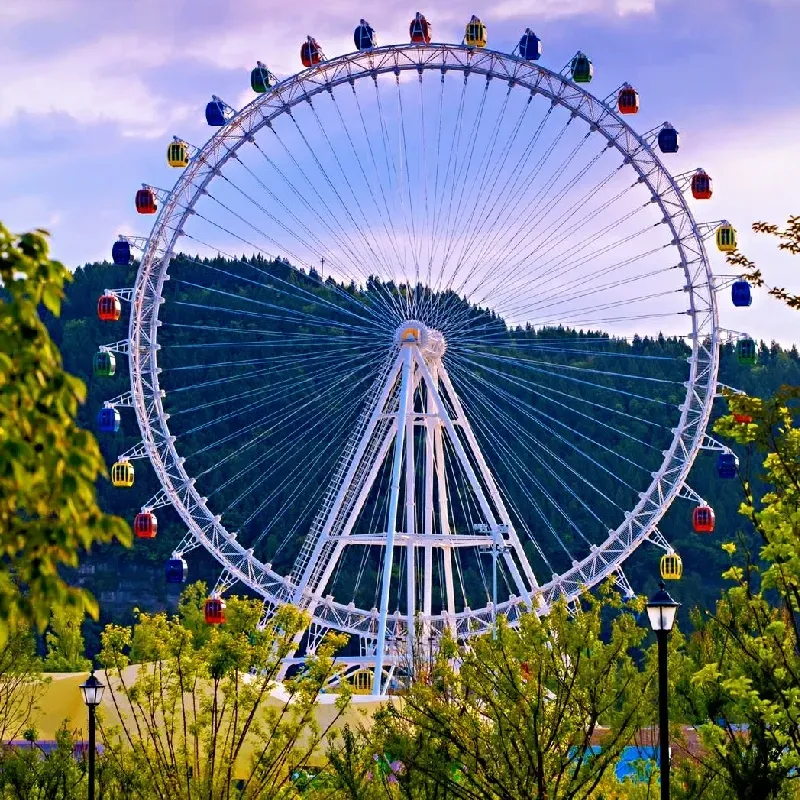- Albanian
- Arabic
- Belarusian
- Bengali
- Czech
- English
- French
- German
- Hebrew
- Hungarian
- Indonesian
- irish
- Italian
- Japanese
- kazakh
- Persian
- Russian
- Thai
- Uzbek
- Vietnamese
different roller coaster types
Different Roller Coaster Types A Thrilling Journey through Amusement Parks
Roller coasters have long been a staple of amusement parks, providing adrenaline-seeking thrill-seekers the ultimate rush. As engineering marvels, roller coasters range from simple wooden structures to complex steel behemoths, each offering its unique experience. In this article, we will explore various types of roller coasters, their characteristics, and what makes them appealing to different audiences.
1. Wooden Roller Coasters
Wooden roller coasters are known for their nostalgic charm and classic design. Made primarily of wood, these coasters often feature a bumpy ride due to their structure, which is appealing to many riders who enjoy a more traditional amusement park experience. The layout typically includes sharp turns, steep drops, and the iconic airtime moments that make riders feel weightless. Some of the most famous wooden coasters, like the Coney Island Cyclone or The Voyage at Holiday World, have become legends in the roller coaster community. Their unique rattling sounds and the smell of wood create an immersive atmosphere that many enthusiasts love.
2. Steel Roller Coasters
Steel roller coasters revolutionized the amusement park industry with their smoother rides, higher speeds, and more complex designs. Unlike their wooden counterparts, steel coasters can achieve steeper drops and elements such as loops, corkscrews, and zero-gravity rolls. Notable examples include Steel Vengeance at Cedar Point and Fury 325 at Carowinds, which push the limits of height and speed. Steel coasters can also be themed to enhance the overall experience, with elaborate settings that transport riders into a different world.
Inverted roller coasters suspend riders below the track, with their legs dangling freely. This design creates an exhilarating feeling of weightlessness and offers unique perspectives as riders twist and turn through loops and dives. Notable inverted coasters like Batman The Ride at Six Flags parks are widely acclaimed for their intensity and thrilling inversions. The sensation of flying adds an additional layer to the experience, making it an appealing choice for adrenaline junkies.
4. Launch Coasters
different roller coaster types

Unlike traditional roller coasters that rely on a lift hill to gain speed, launch coasters use a variety of mechanisms, such as magnetic propulsion or a powerful launch system, to catapult riders straight into the action. With rapid accelerations that can propel riders from 0 to 60 mph in a matter of seconds, these coasters offer a thrilling start before engaging in elements such as loops and twists. Popular examples include Top Thrill Dragster and Kingda Ka, both known for their record-breaking heights and exhilarating launches.
5. Dive Coasters
Dive coasters feature a unique design where riders are taken to an initial height before the track suddenly drops away, creating a freefalling sensation. The anticipation builds as riders experience a moment of suspense at the top before plummeting into a steep drop. Coasters like Griffon at Busch Gardens Williamsburg make this experience exceptional with its vertical drops and thrilling inversions that follow. The psychological buildup before the drop adds to the overall thrill, making dive coasters a favorite among thrill-seekers.
6. Family Coasters
Family coasters are designed for riders of all ages and levels of thrill-seeking. These coasters typically have gentler drops and turns, making them suitable for younger children and families looking to enjoy the ride together. They offer a fun and exciting experience without the extreme elements found in larger coasters. Examples include the Barnstormer at Walt Disney World and Peppa Pig's Balloon Ride, appealing to a broad audience while still providing an enjoyable experience.
7. Spinning Coasters
Spinning coasters add an unpredictable twist to the roller coaster experience. As cars rotate while navigating turns and drops, riders cannot anticipate the direction they will face, amplifying the thrill factor. Coasters such as Dodonpa and Tornado provide a unique and dizzying experience, enticing those who love surprises and unexpected elements.
Conclusion
The diversity of roller coaster types ensures that there’s something for everyone, from the nostalgic wooden coasters to the heart-pounding steel rides and gentler family options. Each type offers distinct thrills and experiences, catering to diverse audiences and making amusement parks an exciting destination for thrill-seekers and families alike. Whether you’re a seasoned coaster enthusiast or trying one for the first time, there’s no doubt that the world of roller coasters continues to evolve, promising even more exhilarating experiences in the future.
-
Flume Ride-Hebei Zhipao Amusement Equipment Manufacturing Co., Ltd.|Thrilling Water Attraction&Customizable DesignJul.30,2025
-
Flume Ride - Hebei Zhipao Amusement Equipment | Water Coaster, Thrilling DescentJul.30,2025
-
Flume Ride - Hebei Zhipao | Thrilling Water AttractionJul.30,2025
-
Flume Ride: Thrilling Water Attraction by Hebei Zhipao|Log Flume Manufacturers&Flume Ride DesignJul.30,2025
-
Flume Ride-Hebei Zhipao Amusement Equipment Manufacturing Co., Ltd.|Thrilling Water Coaster, Safe DesignJul.30,2025
-
Flume Ride-Hebei Zhipao Amusement Equipment Manufacturing Co., Ltd.|Thrilling Water Attraction, Safe DesignJul.30,2025
